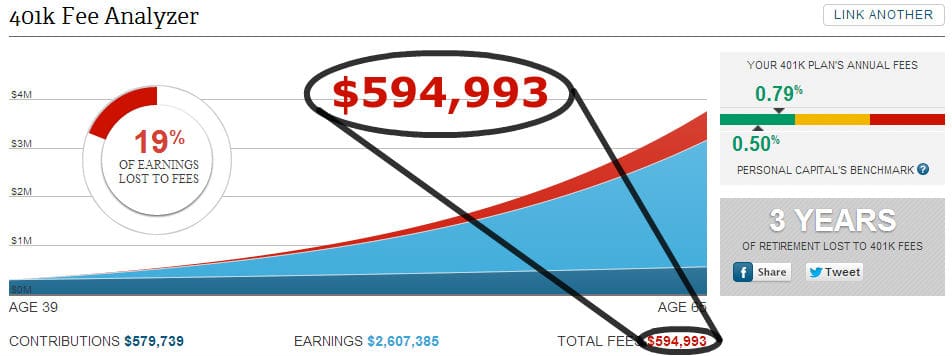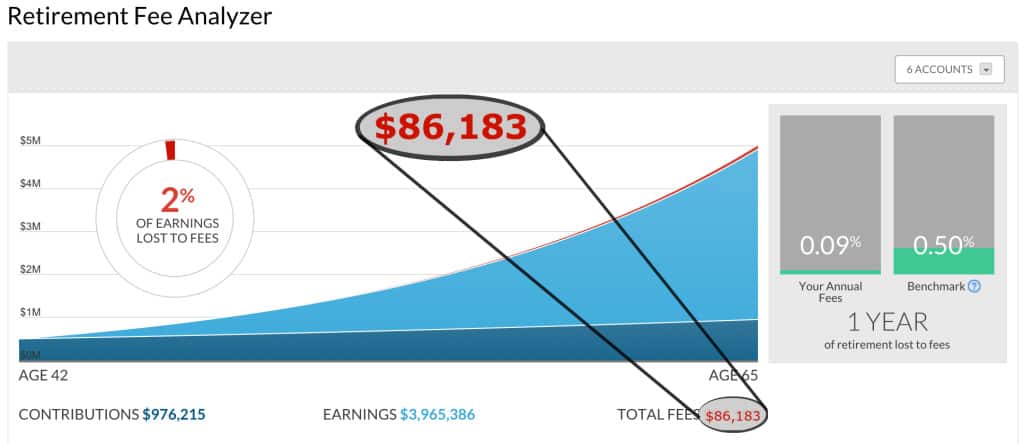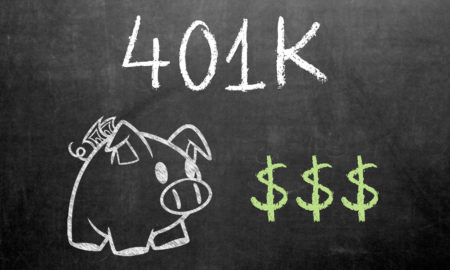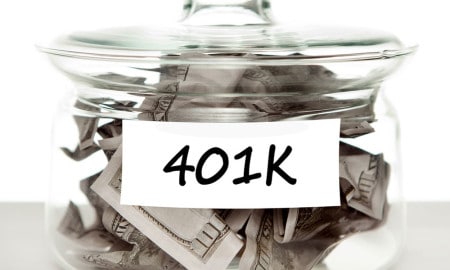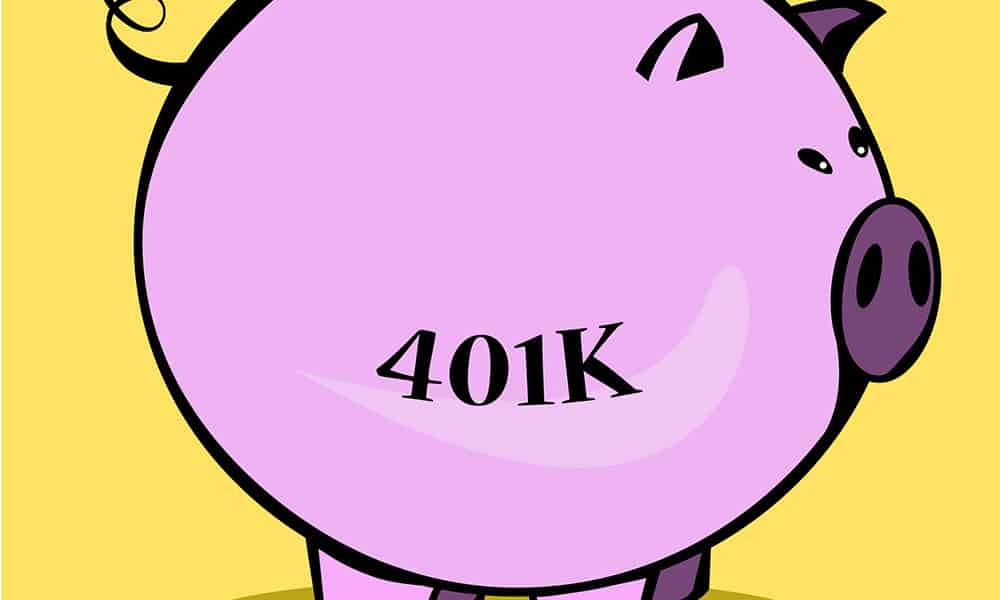

You have probably seen or heard that your employer offers a retirement account in the form of a 401(k) or a 403(b). These are both ways that your employer encourages you to save money toward your nest egg after you retire.
How nice of them! Think about that the next time you’re cursing your boss for making you stay late.
While both of these plans offer excellent benefits, there are differences. Let’s take a look at the difference between 401(k) and 403(b).
What is a 401(k)?
The 401(k) is a retirement account offered by most businesses that allow employees to sock away money in a tax deferred retirement account. This means that the money you send to your 401(k) won’t be taxed until you withdraw at the age of 59.5.
If you are like most people, you will be in a lower tax bracket at the time of retirement, so the funds you withdraw will be taxed at this lower rate as opposed to the tax rate you are currently earning at your job in your 20’s or 30’s. The amount you contribute to your 401(k) also lowers your current taxable income. This makes sense because you are letting your future self handle the taxes!
So, if you contribute $10,000 this year into your 401(k), your taxable income will be lowered by that amount when you settle up with Uncle Sam in April.
This all sounds great, so I am sure you are chomping at the bit to start funnelling money into your retirement account. But how much can you even put in?
Contribution Limits
For 2017, the 401(k) contribution limit is $18,000. If you are 50 or older you are given the ability to “catch up” by contributing $6,000 more to your retirement, raising your annual maximum to $24,000. With all the benefits this plan offers, I am sure you will contribute the full amount every year, right?
With the standard salary being right around $55,000, it may difficult to contribute 33% of your salary to retirement, but that’s ok! As long as you utilize this plan, you will be ahead of the game.
We haven’t even gotten to the best part about this plan yet… The free money.
The Employer Match
That’s right. Some employers will give you free money to shovel toward your nest egg, with no strings attached!
This amazing benefit is known as the Employer Match. Most employers match your contributions between 3-6% of your salary. Can somebody pinch me? This sounds too good to be true.
As great as this program is, you will be shocked to know that a large portion of workers are not contributing to their 401(k)!
What if Your Employer Doesn’t Offer a 401(k)?
If you work in education, government or ministry, the odds are your employer does offer what is called a 403(b) plan.
Just as you were getting comfortable with the 401(k), we throw another curve ball at you! Relax, you are going to like this one.
403b vs 401k
The 401(k) has a distant cousin called the 403(b). Many local governments and education systems use this retirement vehicle as a way to allow employees from non-profits sectors like this to contribute toward their retirement as well.
When asking yourself, “what is 403b”, it should ease your mind to know that this plan is nearly identical to the 401(k). There are just a few small differences.
With the 403(b) designed for these organizations with lower budgets, they are exempt from some of the administrative burdens that come with a 401(k) plan.
What does this mean for you? These plans have lower administrative costs, which do benefit you indirectly. Lower administrative costs means less money out of your pocket in the form of fees.
403(b) plans used to restrict investment options to only variable annuities. This restriction was taken away many years ago, allowing the purchase of mutual funds and index funds.
Similar to the 401(k), the money you contribute will often be matched by your employer to a certain percentage. This is the free money we talked about earlier!
The Roth Option
When comparing the 401k vs 403b, you will see that both have the benefit of being able to contribute funds under a Roth method. This is different than the traditional versions that are tax-deferred. Instead of paying for the taxes at the time of withdraw in retirement, the Roth option allows you to pay those taxes now.
What does this mean?
This means every dollar that grows inside of your 401(k) or 403(b) grows completely tax-free!
Your taxable income will not see the same short-term benefit as a traditional, but when you start pulling from your nest egg, there will be no paying the taxman on all of the millions in compound interest you have accumulated over your working career.
It is up to your employer if they decide to offer the Roth version of your retirement plan. If you see this as an option, be sure to consider which may be best for you.
The Bottom Line
Both the 401(k) and 403(b) share the same withdrawal terms. Once you reach 59.5, you are able to begin withdrawing without the 10% penalty that comes from dipping into your stash earlier than that.
The age of 59.5 may seem like it is far over the horizon from your strapping young 25 year old self now, but it will come eventually. Start planning for this now!
Both of these tax-deferred plans offer very similar benefits. Unless you work for a tax-exempt organization like a school or government, you will most likely be offered the 401(k).
As great as these programs are, you would be surprised at how many workers are not contributing at all! Do we need to go over the free money section again? Don’t be the one who misses out on the benefits that the 401(k) and 403(b) offer.
An Important Tip For Uncovering Hidden Fees In Your 401(k) or 403(b) Investments
Most people greatly under-estimate the impact that fees can have on their retirement accounts. Due to the power of compound interest, even a seemingly tiny 0.5% difference in fees can cost you hundreds of thousands of dollars and delay your retirement by years, even decades.
When one of InvestmentZen’s contributors ran Personal Capital’s fee analysis tool on his 401k portfolio, he nearly fell out of his chair. The analysis showed that with his current portfolio, he was on track to paying a whopping $594,993 in fees over the next 26 years and losing 3 years of retirement, due entirely to hidden fees:
After making this discovery, it only took him a few hours of adjusting his portfolio with the help of Personal Capital’s free fee analyzer to reduce his potential fees to just $86,163, saving him over $500,000 dollars and shaving 2 years from his road to retirement.
If you want to get the most out of your 401(k) or 403(b) accounts, signing up for a free account at Personal Capital to take advantage of their investment fee analyzer is an easy way to do it.
It could potentially save you $500,000 dollars (or more).
Photo Credit: investmentzen 401(k) Piggy Bank & Cash via photopin (license)


